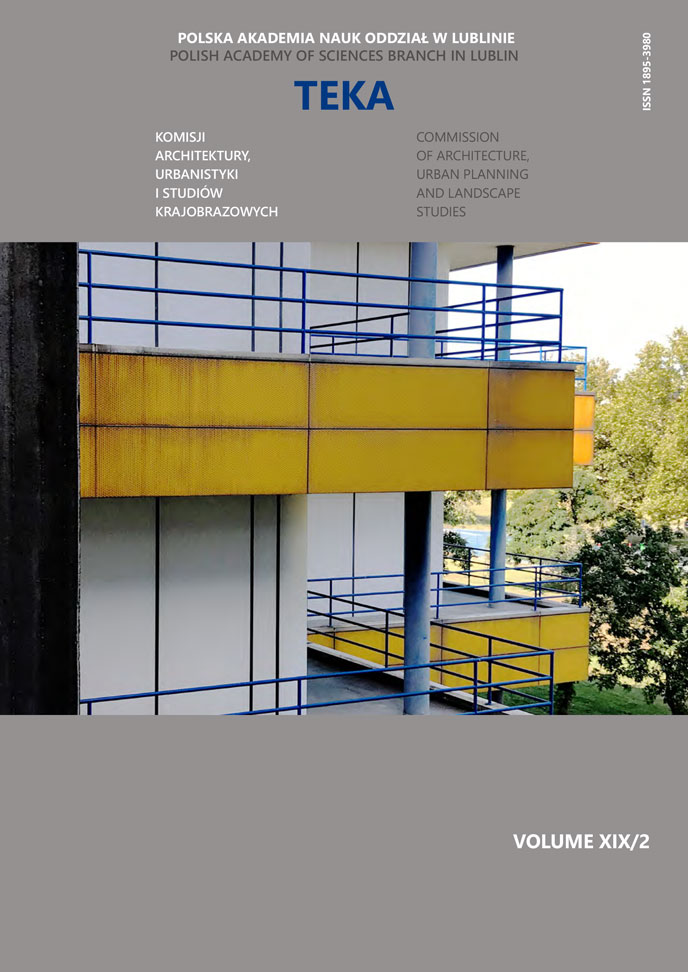Thermo-modernisation of 20th century hospital buildings – material and technical aspects
Main Article Content
DOI
Authors
Abstract
In recent years, it has become commonplace in Poland to modernise hospitals built in the 20th century in order to adapt them to modern requirements. Most often, their scope includes thermo-modernisation which consists of insulation of walls, roof and replacement of windows and doors. The subject of this study was the material and technical aspects related to the thermomodernisation of 20th century hospital buildings in the Lubelskie voivodeship in the context of changing values of heat transfer coefficient of building partitions at the turn of the years. Among other things, energy audits before and after thermomodernisation were carried out for the investigated 23 facilities in the Lubelskie Voivodeship. An analysis was also made of the materials and technologies used in the construction of hospitals in particular periods of time. The research showed that traditional masonry technology was widely used until the early 1970s, which was then replaced by industrialised technologies, including prefabricated ones. With the introduction of thermal insulation requirements for the building envelope in the 1970s, there were changes to the materials used in hospital construction, including the need for thermal insulation materials. In the following decades, the values of the heat transfer coefficient have continuously changed, resulting in the need to use insulating materials with better performance. The thermomodernisation of hospitals carried out in recent years made it possible to meet the requirements for the heat transfer coefficient, but these mostly referred to the value in force at the time. They did not assume a longer perspective, taking into account changes in this coefficient in the coming years. As a result, in less than a decade, they will not meet the current requirements for the insulation of the building envelope and will therefore be eligible for thermomodernisation. Such an action is cost-effective in the short term, but given the far-sighted development plan of the hospitals, it is a wasteful solution.



